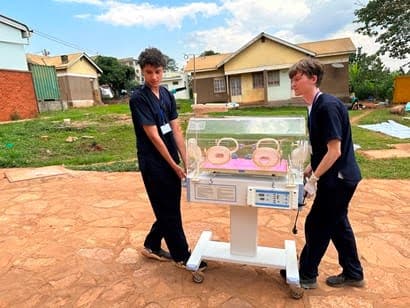Engineer Better Health with EWB-USA
Thanks to the merger of Engineering World Health and Engineers Without Borders USA, we’re now equipped to serve more communities around the world with essential resources to support holistic community health. With your support, we’re expanding access to clean water, reliable sanitation, and critical healthcare infrastructure in regions where they’re needed most. We look forward to the next chapter of impact for Community Health at Engineers Without Borders USA.
Support Community Health through the power of Engineering
Frequently asked questions
Is my donation secure?
Do I get a receipt?
How is my personal data handled?
The merger between EWH and EWB-USA creates opportunities to enhance community health outcomes by integrating our expertise. Together, we will be able to bring holistic engineering solutions to underserved areas.
Imagine a rural healthcare facility in Guatemala or Uganda equipped with repaired medical devices, improved water and sanitation systems, renewable energy sources, and trained staff prepared to maintain this infrastructure long into the future. This is holistic, sustainable community health development and we are on the precipice. Please seize this moment to join us in our movement.
We want more mothers and children to access critical healthcare services around the world. We are asking for your help with a gift today to make sure that happens.
Your support today will enable us to:
- Conduct EWH-style Institutes in Guatemala in December 2025,
- Provide ongoing medical equipment repair training for hospital technicians in Uganda throughout 2025,
- Continue our partnership with iFixit to host a Resource Library for biomedical technicians,
- Enhance water and energy infrastructure in rural healthcare centers around the world
In 2024, EWH supported 50 biomedical engineering volunteers in Guatemala and Uganda, enabling them to complete 497 medical equipment repairs—valued at $934,000. These repairs, particularly in outpatient, labor, delivery, and maternity departments, have led to improved maternal and infant health outcomes.

